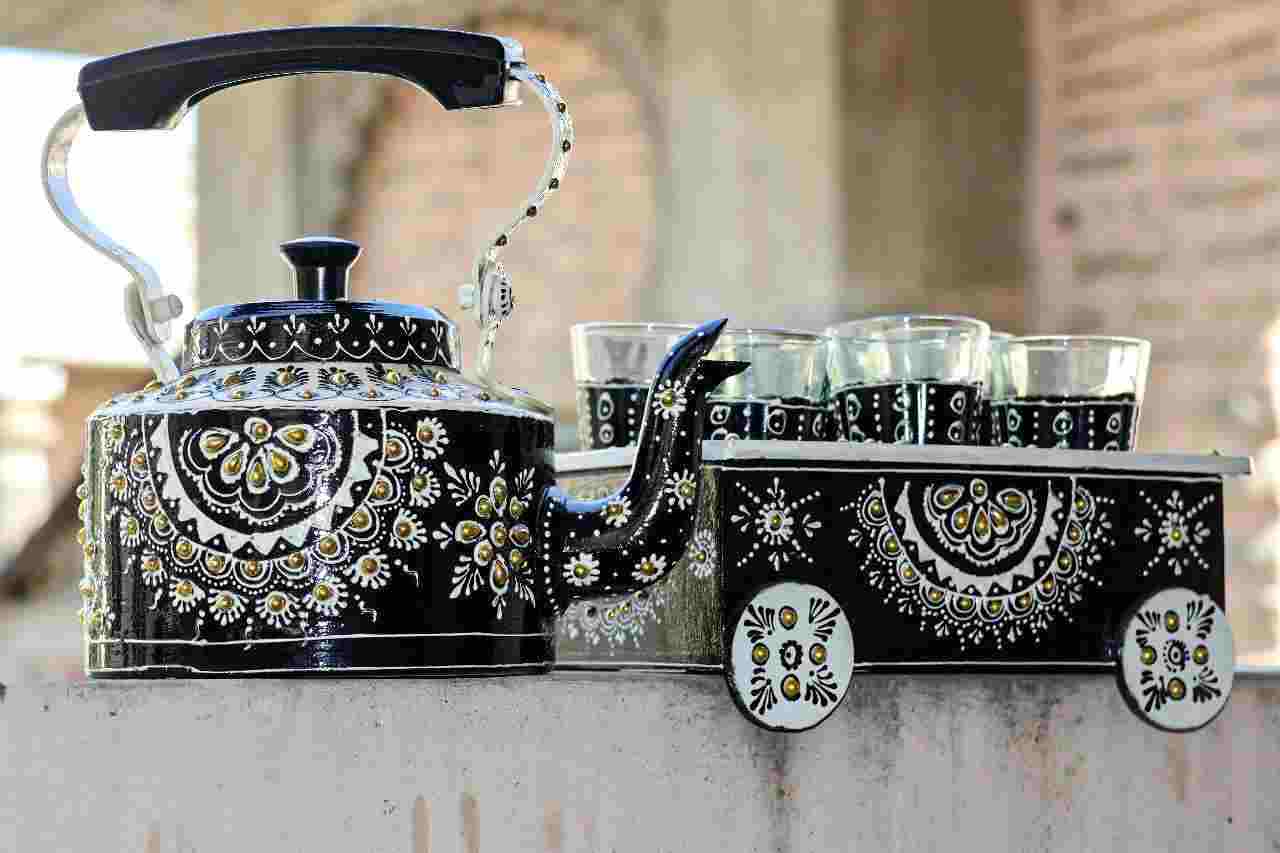Introduction
Rajasthan, the land of deserts, palaces, and vibrant traditions, boasts a rich and diverse heritage of handicrafts that have stood the test of time. With a history spanning centuries, Rajasthani handicrafts have become synonymous with the state’s cultural identity. These exquisite creations reflect the artistry, skills, and creativity of its people, showcasing a kaleidoscope of colors, patterns, and techniques. In this article, we delve into the world of Rajasthani Handicrafts, exploring their history, significance, and the skilled artisans behind these masterpieces.
A Historical Perspective
The history of Rajasthani handicrafts is as old as the civilization of this region itself. Rajasthan has been a melting pot of various cultures and dynasties, including the Mughals and the Rajputs, each contributing to the rich tapestry of the state’s art and craft. The intricate designs and motifs seen in Rajasthani handicrafts often draw inspiration from the region’s history, including its royal courts and desert landscapes.
Major Handicraft Categories
Textiles and Fabrics:
Rajasthan is renowned for its textile industry, which produces some of the most exquisite fabrics in India. The state is known for its intricate block printing, tie-dye (Bandhani), and vibrant embroidery work. Jaipur, Jodhpur, and Udaipur are famous for their distinct textile traditions. The “Leheriya” and “Sanganeri” prints are particularly popular, with their vibrant colors and geometric patterns adorning clothing, bedspreads, and curtains.
Jewelry:
Rajasthani jewelry is a treasure trove of exquisite craftsmanship. Kundan, Meenakari, and Polki jewelry are some of the traditional styles that have been passed down through generations. These jewelry pieces often feature intricate enamel work and precious gemstones, making them highly sought after by collectors and jewelry enthusiasts worldwide.
Pottery and Ceramics:
The pottery and ceramic work in Rajasthan reflects the state’s rustic charm and vibrant culture. The blue pottery of Jaipur, known for its distinctive blue and white patterns, is a standout. The city of Khurja is renowned for its glazed ceramic pottery, while Bikaner is famous for its unique terracotta work.
Wooden Crafts:
Rajasthan’s skilled artisans create exquisite wooden furniture, carvings, and artifacts. Sheesham and rosewood are commonly used for crafting furniture, while intricately carved wooden screens and doors can be found in many Rajasthani homes and palaces.
Metalwork:
The metalwork of Rajasthan is a testament to the state’s historical prowess in metallurgy. Brass, copper, and silver are often used to create decorative items, utensils, and religious artifacts. The art of making dhokra metal craft, which involves casting metal using the lost-wax technique, is a traditional craft that continues to thrive in the state.
Leatherwork:
Rajasthan is renowned for its leatherwork, with the city of Jodhpur being a prominent hub for this craft. The famous Jodhpur boots, known for their distinctive shape and durability, are a testament to the skill of the local artisans. Leather bags, belts, and other accessories are also popular among tourists and locals alike.
Miniature Paintings:
Rajasthan is famous for its miniature paintings, which depict mythological stories, royal courts, and local traditions. The cities of Jaipur, Udaipur, and Jodhpur are well-known centers for this art form. These intricate paintings are created using finely detailed brushwork and vivid colors, often depicting stories from Indian epics like the Ramayana and Mahabharata.
Significance of Rajasthani Handicrafts
Rajasthani handicrafts are not just aesthetically pleasing; they also play a vital role in preserving and promoting the state’s cultural heritage. These crafts provide employment opportunities to countless artisans and their families, helping to sustain traditional skills that have been passed down through generations.
Tourism in Rajasthan is greatly enriched by these handicrafts, as visitors from all over the world are drawn to the vibrant markets and shops that showcase these masterpieces. The revenue generated from handicraft sales bolsters the local economy and contributes to the overall development of the region.
Artisans and Craftsmanship
The backbone of Rajasthan’s handicraft industry is its skilled artisans, who have inherited their crafts from their ancestors. These craftsmen and women undergo years of rigorous training to perfect their skills, and their dedication is evident in every piece they create. Artisan communities are often closely-knit, passing down their knowledge and expertise to the younger generation.
Challenges Faced
Despite the rich legacy of Rajasthani handicrafts, there are several challenges faced by the artisans and the industry as a whole. Mass production and machine-made products have posed a threat to the authenticity and uniqueness of handmade crafts. Additionally, fluctuations in demand, especially during economic downturns or the COVID-19 pandemic, have affected the livelihoods of many artisans.
Promoting and Preserving Rajasthani Handicrafts
To address these challenges and ensure the survival of Rajasthani handicrafts, several initiatives have been undertaken. Government bodies and non-governmental organizations (NGOs) have launched programs to provide training, financial support, and marketing assistance to artisans. These efforts aim to improve the living conditions of artisans and create a sustainable market for their products.
Tourism also plays a crucial role in promoting Rajasthani handicrafts. The government has actively encouraged cultural tourism, which includes visits to artisan villages and workshops. Tourists have the opportunity to witness the craftsmanship firsthand and purchase authentic handicrafts directly from the source.
The Future of Rajasthani Handicrafts
As we look to the future, it’s essential to consider how Rajasthani handicrafts can continue to thrive in a modern world. Several trends and strategies are emerging to ensure the longevity of these traditional crafts:
Innovation and Modernization: While preserving tradition is crucial, artisans are also exploring ways to adapt to contemporary tastes. They are incorporating modern designs and materials into their creations, making them more appealing to a broader audience. For instance, traditional Rajasthani block prints are now being used on modern clothing and accessories, appealing to both traditionalists and fashion-forward consumers.
E-commerce and Digital Marketing: The advent of e-commerce has opened up new markets for Rajasthani handicrafts. Artisans and cooperatives are increasingly using online platforms to reach a global audience. Digital marketing strategies, including social media promotion and e-marketplaces, have become essential tools in expanding their customer base.
Collaborations and Partnerships: Artisans are collaborating with designers and brands to create fusion products that combine traditional craftsmanship with contemporary aesthetics. Such partnerships not only introduce these crafts to a wider audience but also provide artisans with a sustainable source of income.
Education and Skill Enhancement: Government initiatives and NGOs are focusing on skill enhancement programs for artisans. These programs not only help artisans hone their skills but also provide them with knowledge about market trends, quality control, and sustainable practices.
Sustainable Practices: Sustainability is a growing concern in the handicraft industry. Artisans are increasingly using eco-friendly materials and production processes, appealing to environmentally conscious consumers. This shift towards sustainability not only benefits the environment but also enhances the reputation of Rajasthani handicrafts in the global market.
Cultural Tourism and Workshops: Rajasthan continues to attract tourists eager to experience its rich culture. Artisan villages and workshops offer tourists the chance to participate in workshops and learn about the crafts firsthand. This immersive experience not only promotes the sale of handicrafts but also fosters cultural exchange.
Government Support: The government of Rajasthan recognizes the importance of handicrafts and has introduced policies and schemes to support artisans. Financial aid, marketing assistance, and exposure through cultural events are some of the ways in which the government is bolstering the handicraft industry.
Conclusion
Rajasthani Handicrafts Online are not mere objects; they are the embodiment of the state’s rich cultural heritage and the dedication of its artisans. These crafts have endured through centuries, evolving with time while preserving their authenticity. By supporting the artisans and appreciating the beauty of Rajasthani handicrafts, we not only enrich our lives but also contribute to the preservation of a unique and invaluable cultural legacy. In a rapidly changing world, Rajasthani handicrafts stand as a testament to the enduring power of tradition and creativity.





